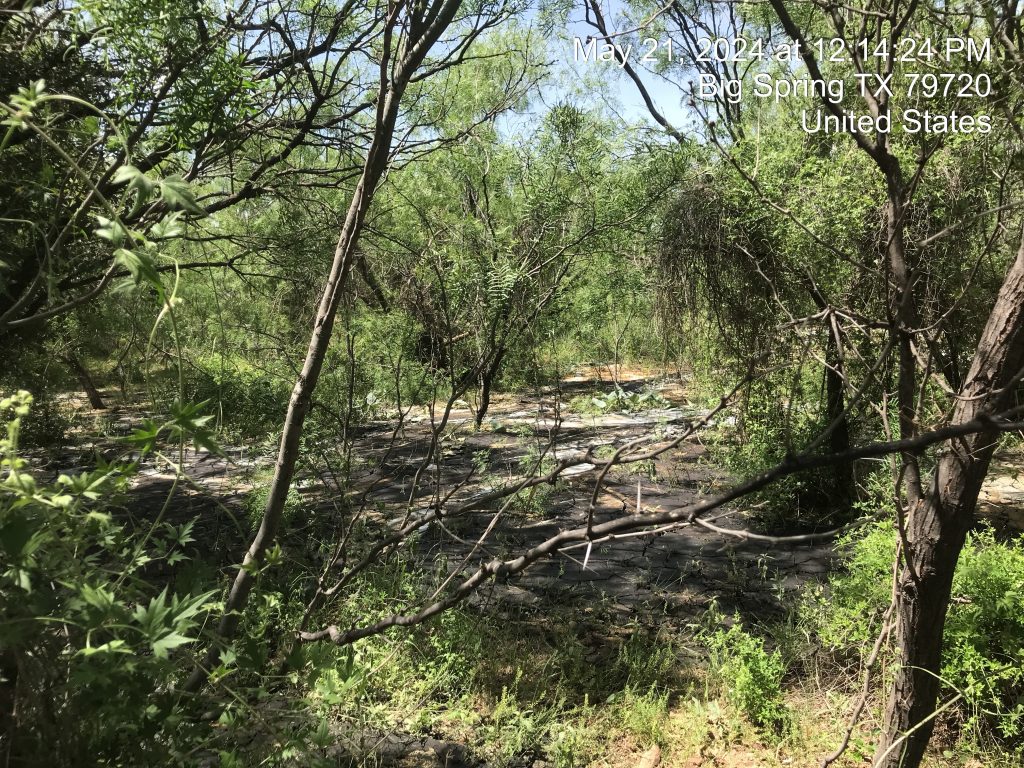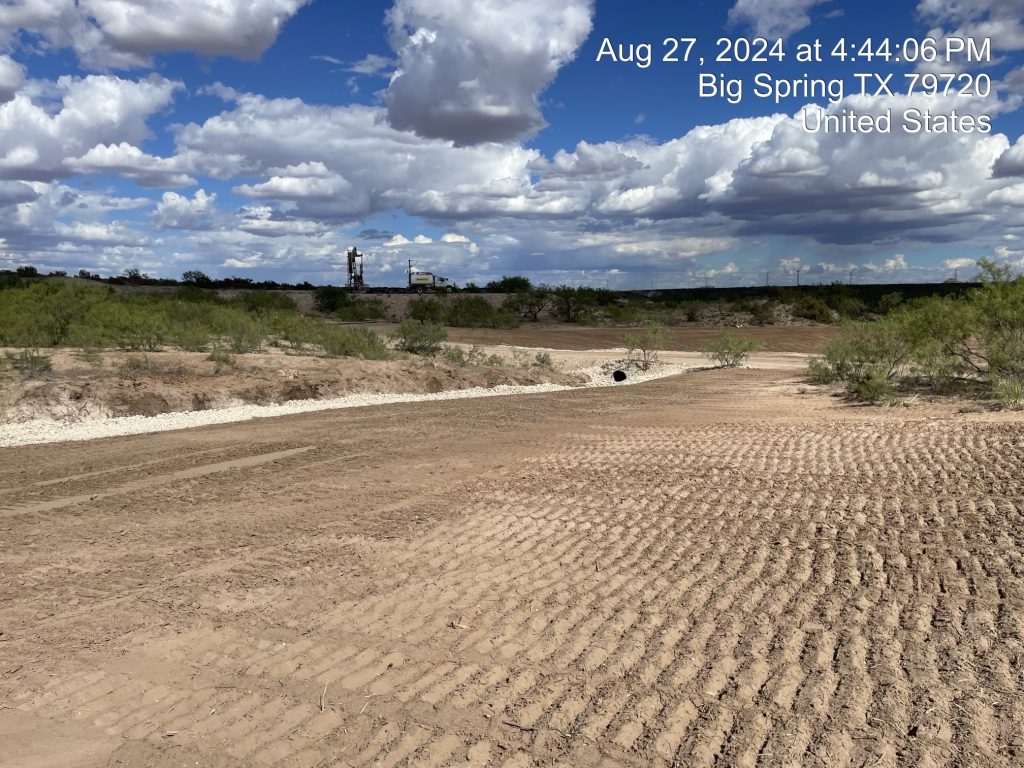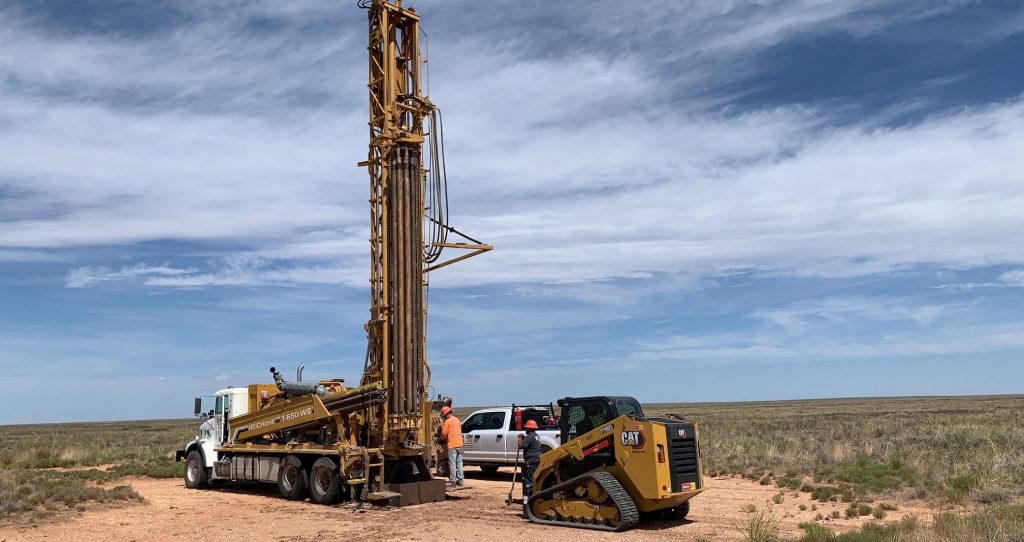Click here to listen to the Audio verison of this story!
As long as crude oil goes directly from the earth to the pipeline and stays in the system, everyone is happy. But with millions of barrels being pumped daily across the Permian Basin, it’s almost inevitable that there will be a leak or a spill somewhere. When that happens, people are calling remediation companies like Resilient Oilfield Services, Talon/LPE, and eTech Environmental Services.
“The Day of Small Beginnings”
“We had this mentality where nothing that was set in front of us was not to be done.” Those are the words of Jesse Baeza, vice president of remediation company Resilient Oilfield Services, describing how he and closer-than-a-brother friend Eddic Villa (owner and president), grew the company from four guys and three trucks to 350 people and 153 trucks in less than 10 years.
Villa had worked in the family construction business for many years, building roads and large projects spanning out from home in Fort Stockton. Then one day Villa called while Baeza was at a Kenny Chesney concert—with an idea, to which Baeza recalls, “I called him crazy.”
He wanted them to start their own company, in oilfield services, although initially not specifically in remediation. Baeza thought the family construction business looked like a huge success, so why did Villa want to change anything? “I guess he wanted to take that leap on his own.”
Villa had also dealt with deep personal tragedy, losing his mother and younger sister—the latter was not quite seven at the time—to a car wreck outside of Fort Stockon. Baeza says he and Villa often feel his mother’s presence watching over them.
Up from Small Beginnings
Grunt Oilfield Services inscribed this message in the foundation of their first building just over two years ago. Now they have five buildings, 153 trucks, and 350 employees.
So, the four guys, three trucks, and two acres of property grew quickly and organically. “We hit the ground running. We were younger guys then; we were about 22-23.”
When they laid the foundation for their first building for what is now five shops, just off SH 158 in Midland, they wrote in the wet concrete a quote from Zechariah 4:10, “Despise not the day of small beginnings.”
In the beginning their focus was on dirt work because that was what they had the equipment for, including vacuum trucks and a belly dump. “We just went after whatever dirt jobs we could get,” Baeza recalled.
Gradually, however, they began to think of expanding. “We kept reinvesting as quickly as we could, buying more assets so we could take on more work. And as we were out there, we noticed the opportunity in remediation. At first, we weren’t even looking in that direction, but once we saw the demand, it made sense to step into it,” said Baeza.
It was the right decision. “That shift into remediation opened up a whole other side of the business and really set the stage for us to grow into more than what we started as.”
Keeping Up with the Change
Today, “Most of what we deal with in the Permian comes down to surface remediation tied to spills, pit closures—that’s critical,” he said. With changes—up and down—in regulations and requirements, it hasn’t changed the field work much. After all, “Oil is oil, saltwater is saltwater,” these being the two most common spill remediation needs.
Things that have changed are the speed and the paperwork. “Regulators and landowners are asking for higher standards, operators are under more scrutiny, [and] that forced us to raise our game—more documentation, more timelines, and more communication with all parties involved.”
As for keeping up with those changes, he noted, “We’re right in the crosshairs of whatever the EPA or Austin puts out.” As noted, the rules of what have changed little, but the how, with reporting, testing, and verification is getting more challenging.
Technology has eased some of the additional verification burden, with drones handling an increasing amount of the proof, “In black and white—or rather in higher resolution and in color.”
More-efficient soil blending equipment is saving time and cost by treating soil onsite. That eliminates the need for hauling it off and replacing it with fill dirt. When evaluating what equipment to add, Baeza explained, “The decision always comes down to does it speed up the process, make it safer for our crews to provide more confidence for our operators?”
In addition to remediation, they offer trucking and logistics, construction, rock crushing, and material supply, as well as crane and rig support.
Whatever other changes happen, Baeza says they are committed to keeping the family atmosphere. “We are, and will always be, family driven.”

Eddie Villa is on the left. Jesse Baeza is on the right. they’re the founders of Resilient Oilfield Services.
Solving or Preventing Environmental Issues
A vital part of solving—or better, preventing—environmental issues comes through assessment and evaluation. What went wrong, or how can we minimize the chances of a spill or an accident?
That’s where Talon/LPE comes in. According to the company’s website, “we identify and solve complex environmental problems.”
A major part of Talon/LPE’s business involves due diligence, often employed when a property is changing hands through purchase. Said the company’s Vice President, Jason Shubert, “We’re most often engaged when properties have current or legacy tanks or when site history is unknown. Our approach starts with a Phase I ESA (ASTM E1527-21/AAI) and, if RECs (recognized environmental condition) are identified, targeted Phase II work to confirm risk, bracket costs, and outline practical closure paths with the correct regulatory body.”
In their evaluation processes, what issues do they most often encounter? Shubert’s list included “hydrocarbon impacts and staining around tanks and separators; produced-water releases driving elevated chlorides; legacy pits/sumps; and occasional unknown containers or drums.”
He said their process is “transaction focused.” They look to prioritize issues that present a true risk as opposed to what’s simply a nuisance, then offer specific options. Those could include “monitoring, limited removal, or full remediation, aligned to deal timelines and budgets.”
Otherwise, assessments can analyze spills, look to prevent one, or verify compliance with existing regulations and best practices. “We use them proactively to spot risks [e.g., tank battery/containment gaps, produced-water handling, corrosion] before incidents occur,” he explained. And “When a release happens, assessments drive the response: delineate the impact, confirm remediation endpoints, and produce a clear cost-to-closure plan.” They also document compliance—verifying permits, plans, and recordkeeping—so clients have both safer operations in the field and a defensible file.
New Technology to Detox Municipal Wastewater
Some of Talon’s newest technology, still in development, will focus beyond the oil patch. Shubert said, “Talon/LPE is developing a biochar-based treatment to reduce PFAS [per- and polyfluoroalkyl substances] in municipal wastewater biosolids.”
Human-made chemicals, PFAS only are toxic, but they are often called “forever chemicals” because they do not easily break down in a normal treatment plant operation, or in the human body.
PFAS can come from industrial laundries, car washes, and home products such as some water-resistant sprays and textiles.
Their biochar will be manure-based, an absorbent similar to charcoal, to pull out the chemicals. The biochar can then be removed and disposed of separately.
The EPA is interested, Shubert reported. “We were awarded an EPA [Environmental Protection Agency] SBIR [Small Business Innovation Research] Phase I contract—publicly announced in January 2025—to prove removal performance and scalability, with the goal of giving utilities and industrial clients a lower-cost path to manage PFAS in residuals and stay ahead of tightening rules.”
Cleaning Up No Matter How It Happened

Before:
Seen here is a location near Big Spring that eTech was called upon to remediate. While the terrain was tough to tackle(the spill having saturated this vegetated area), Resilient met the challenge, leaving behind the clean and groomed site seen below.
When asking an oilfield remediation company about their most common jobs, one expects an answer directly related to drilling or production. But from eTech Environmental’s VP of Operations Brandon Wilson, the answer was unexpected.
And while it may not be number one, it’s becoming more of a problem than ever.
Oilfield theft. As in theft of the oil itself.
Thieves are not known for being careful about cleaning up after themselves, but it’s especially a problem in the oilfield. When they open a valve to load their tanker with someone else’s crude, they don’t always close it. Left open, it can dump hundreds of barrels onto the ground, which then need to be remediated.
That leaves the midstream company with a double loss—the oil and the cost of cleanup.
And here’s another unexpected answer, which happens mainly in spring.

After
Spring plowing that breaks up more than just the roots of last year’s crop. “Almost like clockwork,” said Wilson.
But aren’t those pipelines and supply lines supposed to be buried deeper than a plow can reach?
Indeed, they were, originally, Wilson allowed. But erosion from high winds and the occasional rainstorm gradually removes the top layer, so after a few years, a cotton farmer may suddenly plow up more than he bargained for. In that case, the oil company and the landowner are ready to see eTech’s equipment arrive after the leak is stopped.
For traditional oil spills, automation and technology in general have brought a notable decrease, Wilson said. Predictive algorithms now can detect potential problems early, so operators can head them off.
But when there is a release, long laterals, multi well pads, and 15-well tank batteries are under much more pressure than in the pre-shale era. Nowadays, “Everything’s running under a lot, a lot more pressure and a lot more volume. So, when you do have failure, it seems to be a little bit larger scale than what you would historically have at some of the vertical facilities,” Wilson observed.
Other common cleanups include oil or chemical spills from vehicular accidents, the frequency of which tends to rise and fall with oil prices and the resultant general oilfield activity.
In almost all cases, eTech’s response comes after the repairs are done. Their job usually entails removing the contaminated soil and replacing it with fill dirt. Afterwards they haul the contaminated soil to an appropriate landfill.
New Facilities
Safety and accessibility are key functions in the designs of production facilities today, and Wilson sees many advantages when it comes to accessing and remediating most spills. “Because there’s no more buried utilities, electrical lines, various flow lines, all the piping circulating, all the components of these tank batteries, everything’s above ground now and they’re much safer,” he said.
For site remediation work, most pipelines and tanks are on the surface these days, saving on the expense of hydro-excavating to reach them when there’s an issue. Just as important, there are fewer surprises when a company does have to dig. They’re not worried about striking an unmapped supply line—or worse, a hidden 480-volt power line, which could be deadly, Wilson related.

When Talon/LPE evaluates a site, the issues they most often encounter are “hydrocarbon impacts and straining around tanks and separators; produced-water releases driving elevated chlorides; legacy pits/sumps; and occasional unknown containers or drums.”
On the flip side, there is one big challenge. “When there is a release,” he said, “most of what could potentially be impacted is hard to access with equipment, or sometimes even with manual means. It’s been a big challenge for us over the last several years to figure out various solutions to completing remediation on these facilities.”
They have indeed arrived at some significant solutions and, “I’m pretty proud of what we’ve come up with.”
For Wilson and eTech, the future may include developing ways to remediate contaminated soil onsite instead of hauling it to the landfill and replacing it. This would lower costs and reduce demand for landfill space and for fill dirt, as long as it could be done safely.

Paul Wiseman
Paul Wiseman writes in the oil and gas sector.
The post The Business of Cleaning Up appeared first on Permian Basin Oil and Gas Magazine.
pboilandgasmagazine.com (Article Sourced Website)
#Business #Cleaning
